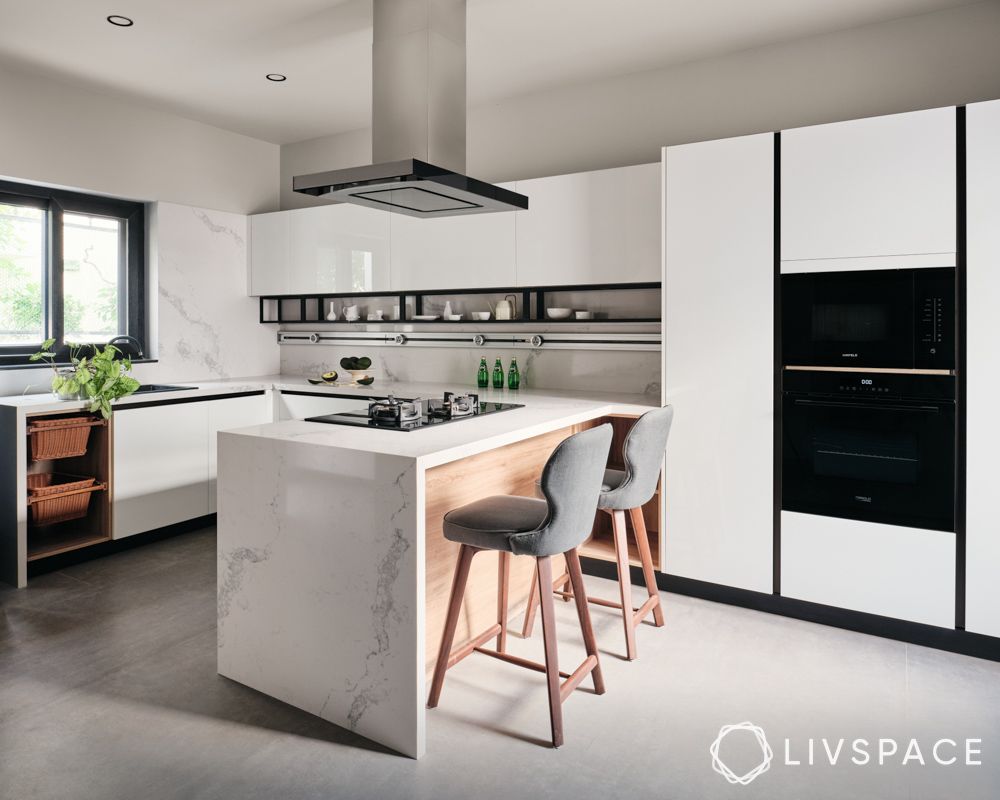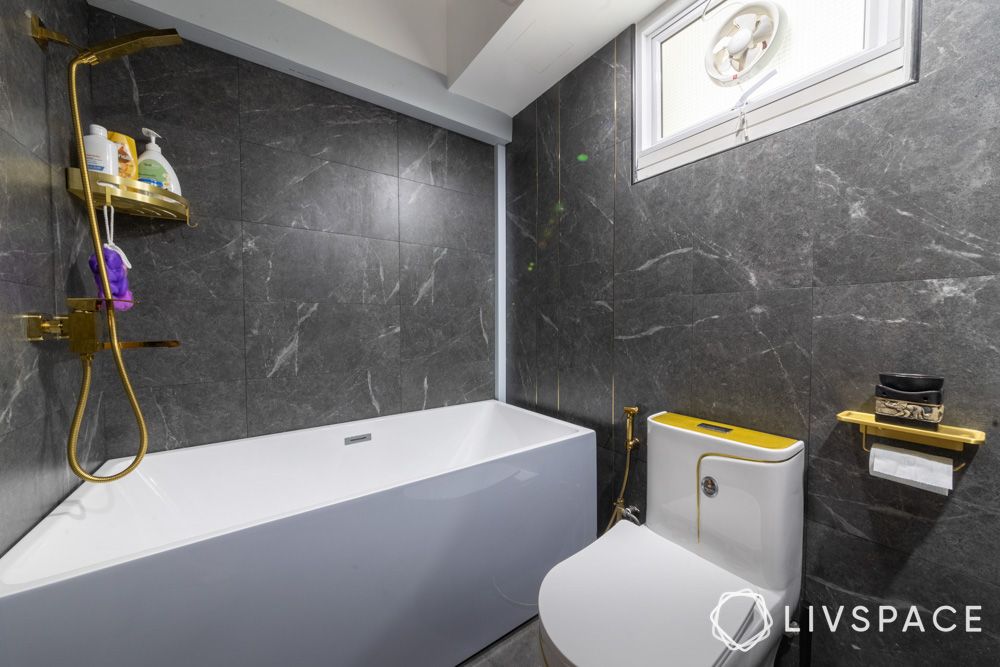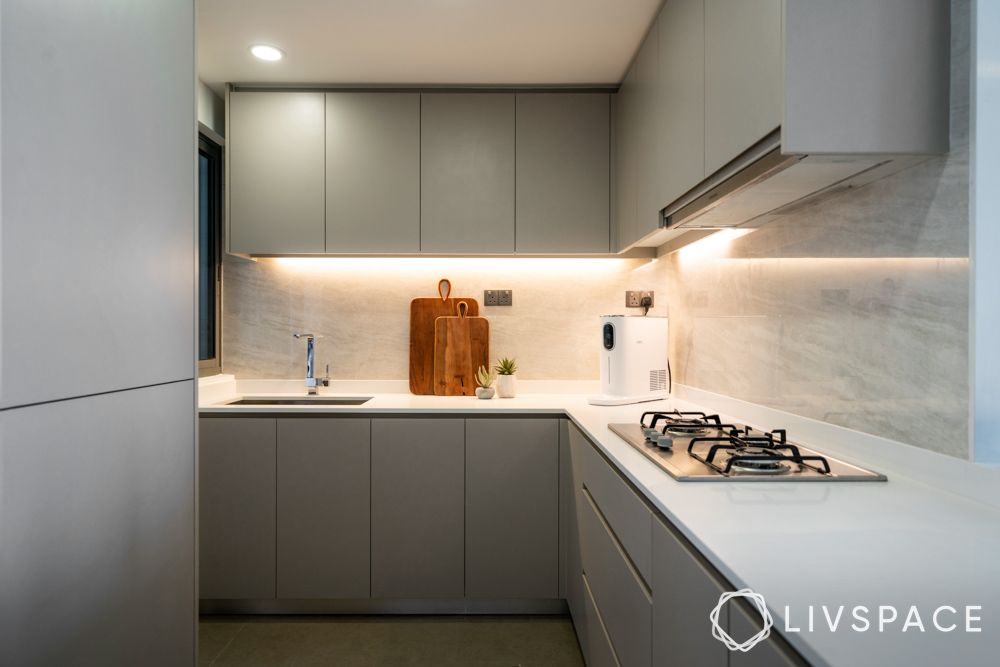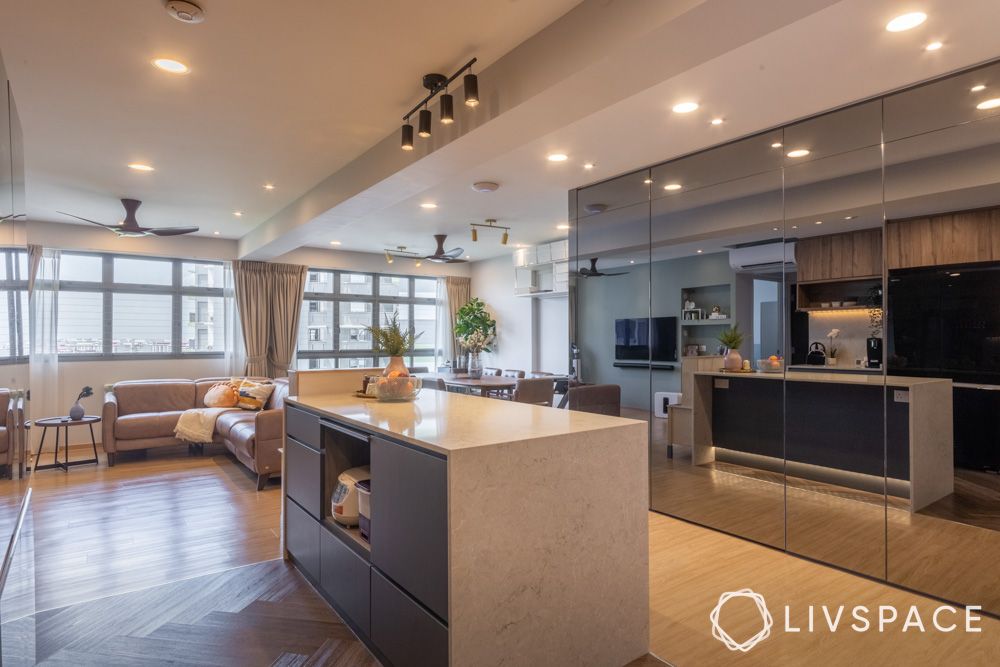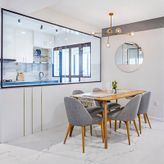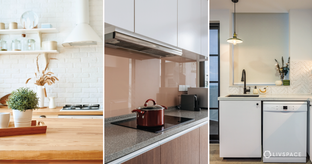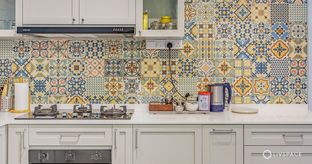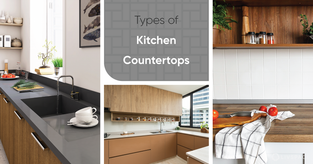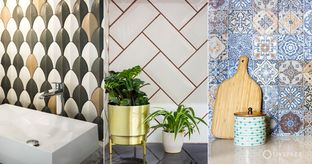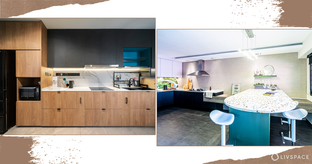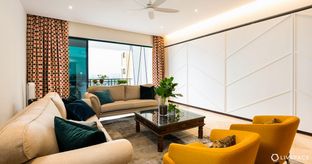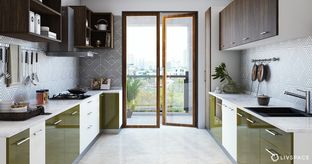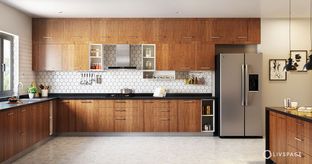In This Article
Stone, be it natural or engineered, is a great element to have at home. Why? Because it lends a sense of luxury or elegance to the space. However, natural stones such as marble and granite can be relatively difficult to maintain compared to engineered stone. Luckily, there are two great contenders that mimic the look of natural stones, without the extra maintenance! They’re none other than sintered stone and quartz.
But before you pick one of the two options, it helps to know the differences between sintered stone vs quartz. With this guide, you’ll get to know what each material is about, their costs, advantages, differences, and where to use them.
1. What Is Sintered Stone?
Sintered stone is made from a mix of minerals that are placed under high pressure and heated to extreme temperatures. What’s more, this material does not use adhesives or bonding agents to create the final product.
This manufacturing process is known as sintering, which is how the material derives its name. The end result mimics the look of natural stone despite being a man-made material.
What Is the Cost of Sintered Stone?
Sintered stone is priced between S$150 to S$300 per foot run
Please note that this price range is inclusive of installation charges, but exclusive of GST, which is levied at 8%.
2. What Are the Pros and Cons of Sintered Stone?
| Pros | Cons |
| Sintered stone is durable owing to its water-resistant, stain-resistant, and scratch-resistant qualities | The colour and pattern does not run through the thickness of the slab, leaving edges without a homogeneous finish |
| It can withstand heat and cold while also being easy to maintain | It can be relatively difficult to repair in case of damage |
| The material is non-porous and does not require sealing | Can be relatively more expensive due to its many qualities |
Also Read: What Is Marble Flooring? The Ultimate Guide to Everything You Need to Know
3. What Is Quartz?
Quartz is a naturally occurring mineral that is used in addition with other materials to create a man-made quartz stone. It’s a manufactured material composed of crushed quartz crystals, polymer resins, and pigments to create a non-porous slab. Moreover, quartz is available in a variety of colours, patterns, and textures.
You can also combine it with glass and other reflective materials to get a sparkling finish. So, if durability is on your mind, quartz can be a strong choice for your home.
What Is the Cost of Quartz?
Quartz is priced between S$80 to S$150 per feet for a classic design
Please note that this price range is inclusive of installation charges, but exclusive of GST, which is levied at 8%
4. What Are the Pros and Cons of Quartz?
| Pros | Cons |
| Quartz is durable and available in a variety of colours and designs | It may be prone to heat damage from high temperatures |
| It is water-resistant, stain-resistant, and scratch-resistant | Lower quality quartz may discolour upon prolonged exposure to UV lights |
| Quartz is easy to maintain | Not as heat-resistant compared to natural stones, so it’s best to avoid placing hot items directly on the slab |
5. What Are the Differences Between Sintered Stone vs Quartz?
Now that you know what sintered stone and quartz have to offer, let’s take a look at how they fare against each other.
| Criteria | Sintered Stone | Quartz |
| Composition | Clay, feldspar, kaolin, and quartz | Natural quartz, polymer resins, and pigments |
| Cost* | S$150 to S$300 per foot run | S$80 to S$150 per feet (for a classic design) |
| Durability | It’s a hardy material and highly durable compared to other alternatives | Quartz is a highly durable material that can withstand wear and tear |
| Design and Versatility | Available in a variety of designs and patterns that can mimic the look of natural materials | Available in a variety of colours, patterns, and styles |
| Maintenance | Easy to maintain | Easy to maintain |
| Resistant to External Elements | Water-, scratch-, stain-, bacteria-, and heat-resistant | Water-, heat-, stain-, bacteria- and scratch-resistant |
| Yellowing upon UV Exposure | Sintered stone does not turn yellow with UV exposure | Low quality quartz may turn yellow over time if exposed to UV rays or high heat |
| Appearance | Brushed, matte, honed, or glossy finish | Polished finish |
From the table above, it’s clear to see that there is overlap between the two materials when it comes to a number of qualities. So you can choose either quartz or sintered stone for your interiors based on your personal preferences.
*Please note that the estimated price ranges mentioned are what will be bourne by the homeowner (inclusive of installation charges) but may be subject to change. Additionally, the prices are not inclusive of GST, which is levied at 8%.
Also Read: Need a Brand New Kitchen Flooring? Here Are 9 Elegant Options to Pick From
6. Where Can You Use Sintered Stone and Quartz at Home?
Both quartz and sintered stone offer similar properties when it comes to resisting various elements. Here are some of the places you can use these materials for the best results:
- Sintered Stone: Vanity and kitchen countertops, shelving, wall cladding, flooring, or in furniture. Sintered stone can also be used externally due to its resistance to yellowing from UV rays
- Quartz: Kitchen worktops, backsplashes, bathroom counterops, and flooring
So, if you’ve been stuck between deciding which material to use between sintered stone vs quartz, you now know that either can be a strong choice for your interiors.
How Can Livspace Help You?
We hope you found this guide on the differences between sintered stone vs quartz useful! At Livspace, we work with quality suppliers to get you the best materials for your home. Book an online consultation with Livspace today to know more about what we can do to realise your dream home.
Have some comments or suggestions you’d like to share with us? We’re all ears! Feel free to write to us at editor.sg@livspace.com.
Disclaimer: All contents of the story are specific to the time of publication. Mentions of costs, budget, materials, and finishes can vary with reference to current rates. Additionally, the designs showcased within the story are subject to availability and will vary based on the year the homes were designed in. Consult our designers for more details on the latest designs, pricing, and availability.


